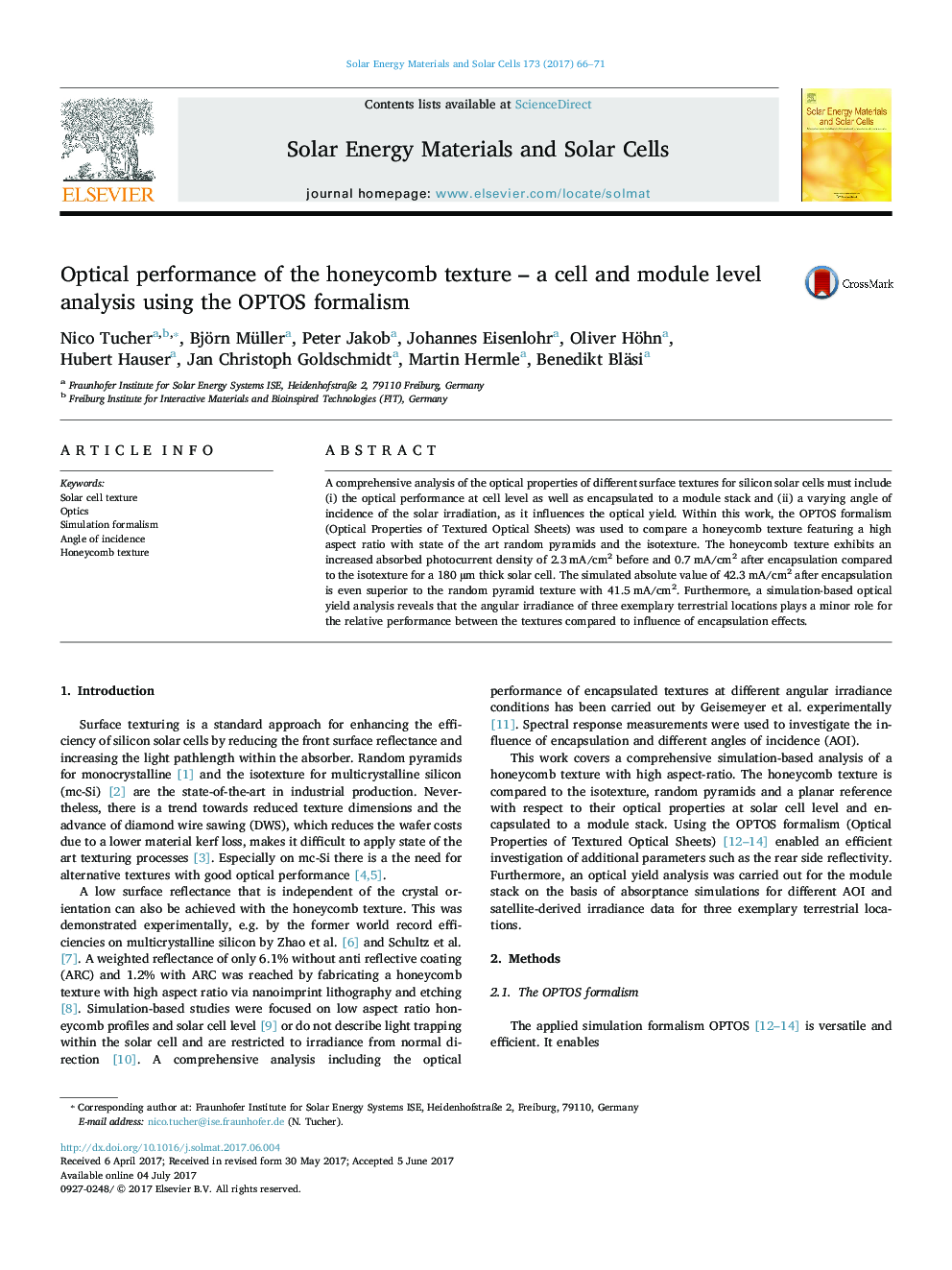| Article ID | Journal | Published Year | Pages | File Type |
|---|---|---|---|---|
| 6456782 | Solar Energy Materials and Solar Cells | 2017 | 6 Pages |
A comprehensive analysis of the optical properties of different surface textures for silicon solar cells must include (i) the optical performance at cell level as well as encapsulated to a module stack and (ii) a varying angle of incidence of the solar irradiation, as it influences the optical yield. Within this work, the OPTOS formalism (Optical Properties of Textured Optical Sheets) was used to compare a honeycomb texture featuring a high aspect ratio with state of the art random pyramids and the isotexture. The honeycomb texture exhibits an increased absorbed photocurrent density of 2.3 mA/cm2 before and 0.7 mA/cm2 after encapsulation compared to the isotexture for a 180 µm thick solar cell. The simulated absolute value of 42.3 mA/cm2 after encapsulation is even superior to the random pyramid texture with 41.5 mA/cm2. Furthermore, a simulation-based optical yield analysis reveals that the angular irradiance of three exemplary terrestrial locations plays a minor role for the relative performance between the textures compared to influence of encapsulation effects.
